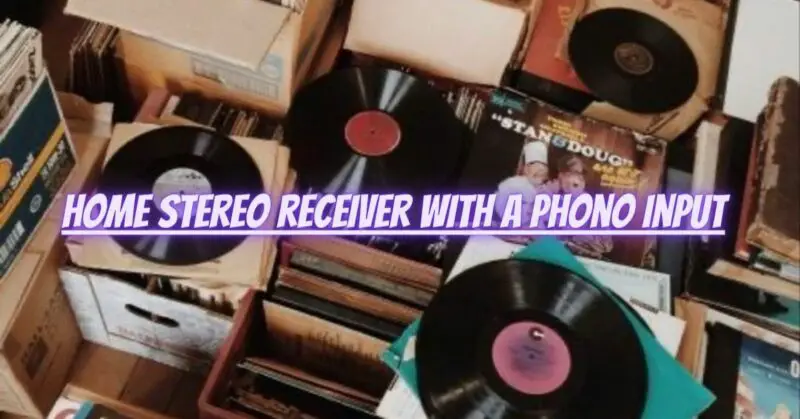In the world of vinyl record enthusiasts, a crucial component for a high-quality audio experience is a home stereo receiver with a phono input. The phono input, also known as a phono stage or phono preamp, plays a vital role in amplifying and equalizing the low-level signal produced by a turntable’s cartridge. In this article, we will explore the importance of a phono input in a home stereo receiver and how it enhances the playback of vinyl records.
Understanding the Phono Input: The phono input on a home stereo receiver is specifically designed to accommodate the unique characteristics of vinyl records. It serves two primary functions: amplification and equalization.
- Amplification: Vinyl records contain analog audio signals that are considerably weaker than other audio sources, such as CDs or digital streaming. The phono input features a built-in preamplifier that boosts the low-level signal from the turntable’s cartridge to a standard line-level output, which is compatible with the receiver’s amplifier section. Without the phono input, the signal from the turntable would be too weak to produce audible sound.
- Equalization: Vinyl records are pressed with a specific equalization curve known as the RIAA curve. This curve compensates for the inherent technical limitations of the vinyl format, including the reduction of low frequencies and the boost of high frequencies during the record-cutting process. The phono input includes an equalization stage that reverses this curve, restoring the audio signal to its original form. This ensures accurate and faithful reproduction of the recorded music.
Benefits of a Phono Input: Having a phono input in a home stereo receiver offers several benefits for vinyl record enthusiasts:
- Simplified Setup: With a built-in phono input, connecting a turntable to the receiver becomes a straightforward process. Simply connect the turntable’s RCA cables to the phono input on the receiver, eliminating the need for an external phono preamp. This streamlined setup saves space, reduces clutter, and simplifies cable management.
- Enhanced Sound Quality: The phono input’s dedicated amplification and equalization stages optimize the signal from the turntable, resulting in improved sound quality. By accurately reproducing the audio as it was intended, the phono input preserves the warmth, richness, and dynamic range unique to vinyl records. This allows listeners to fully appreciate the nuances and character of the music.
- Compatibility: A home stereo receiver with a phono input ensures compatibility with a wide range of turntables, regardless of whether they have a built-in preamp or require an external one. This versatility allows vinyl enthusiasts to use various turntable models without the need for additional equipment or adapters.
- Cost Savings: Investing in a home stereo receiver with a phono input eliminates the need to purchase a separate phono preamp, saving both money and the hassle of additional setup and configuration. This makes it a cost-effective option, especially for those starting or expanding their vinyl setup.
Conclusion: A home stereo receiver with a phono input is a valuable asset for any vinyl record lover. The phono input’s amplification and equalization stages optimize the signal from the turntable, resulting in enhanced sound quality and accurate reproduction of the music. The convenience, compatibility, and cost savings associated with having a phono input make it an essential feature to consider when building a vinyl playback system. With a dedicated phono input, listeners can immerse themselves in the authentic and captivating sound of vinyl records with ease.


